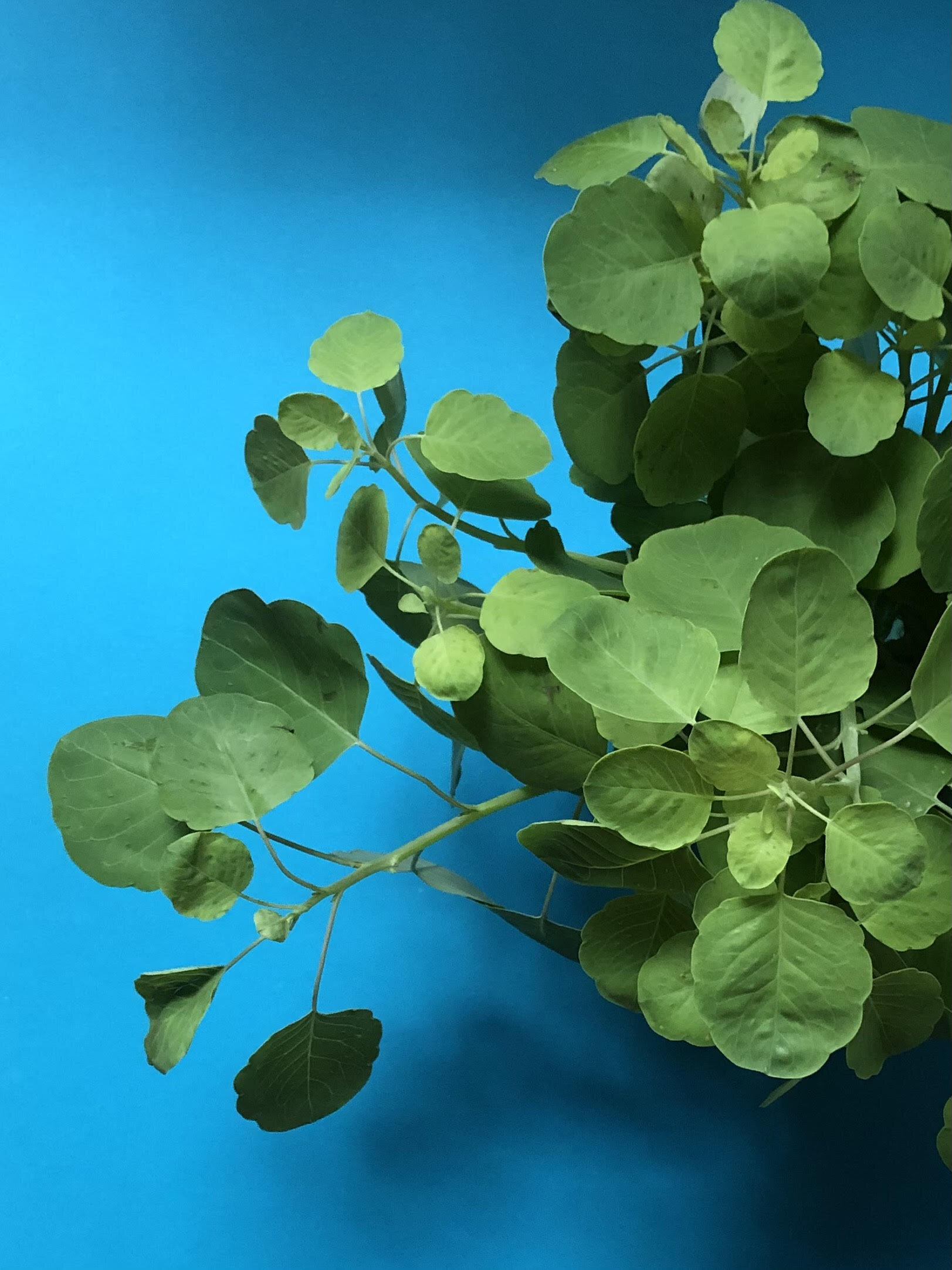Pápalo
Pápalo (PAH-pa-low) is a wild herb that has been growing in Mexico for centuries and is used as a seasoning. Pápalo has a distinct, pungent flavor that is a bit of lemongrass, a bit of cucumber and a bit of arugula all while smelling a daisy.
Friends from Puebla introduced us to this aromatic herb that they grow in their Sunset Park Brooklyn backyard. Although Sunset Park has a bustling Mexican neighborhood with numerous Mexican restaurants, taquerias and markets, Pápalo isn’t easy to find. It is however, easy to grow.
“Pápalo is what we put on tacos in Puebla. It grows all over Mexico and we put it on carne (beef) and cerdo (pork) and in salsa verde. Pápalo is good with meat or any oily food because it helps settle the stomach.”
Pápalo is a pretty plant with light green-blue scalloped leaves. The name Pápalo originates from the Náhuatl word for butterfly and it is often called Pápaloquelite meaning butterfly leaf. Náhuatl was the language of the Aztecs and is still spoken in Central Mexico today.
Pápalo is an annual that thrives in full sun and can grow to 3 feet tall with little maintenance.
Mango Salsa made with mango, chopped Vidalia onion, a squeeze of lime, sea salt and Pápalo
It is the tender, top leaves of Pápalo that are used to season meat and salsa. These leaves are never cooked and are simply torn into small pieces and sprinkled on top.
Fresh is the key to this wild herb and is perhaps the reason it isn’t readily served. It is best picked straight from the garden and eaten that day. It is common to see fresh sprigs of Pápalo in a glass with water next to the hot sauce and salt on dinner tables of Pueblan restaurants and homes.
Salsa Verde made with tomatillos, jalapeño peppers, garlic, Vidalia onion, sea salt and Pápalo
Pápalo is a fresh substitute for cilantro. Pápalo is stronger in taste than cilantro and only a leaf or two are needed to add flavor. Cilantro is an Asia herb that made its way to the New World via trade routes from Asia to Rome to Spain and then landed in Mexico in the 17th century.
As for being an herbal remedy ~ the research is inconclusive and for centuries Mexicans and South Americans have know that Pápalo is an anti-inflammatory that serves as a digestive and helps lower blood pressure.





